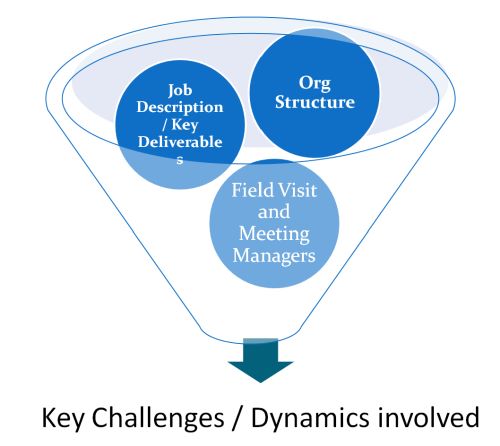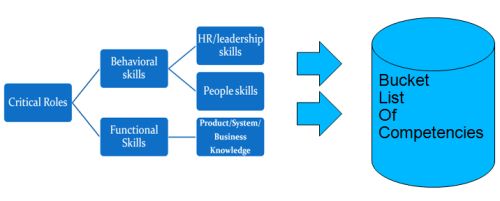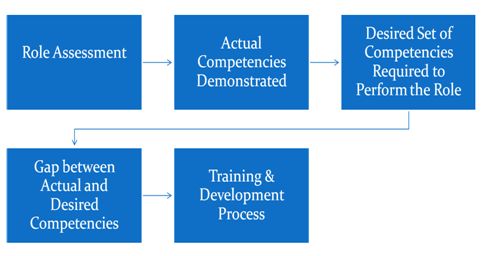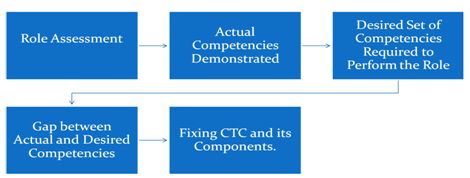- Articles ›
- Human Resources ›
- Competency Based Compensation Articles
Competency Based Compensation
The traditional beliefs revolving around compensation have always maintained that the role is crucial where as the person performing the role is trivial. This notion is now changing rapidly. Organizations have now boarded a different train of thought. Today more importance is given to the person performing the role rather than the role itself. It is ubiquitously believed that if a person in a particular role is treated right then he or she will inadvertently perform beyond expectation. A sure shot way of ensuring that this happens is through competency based compensation. The Dot Com era also revolutionized the compensation administration. Today in most organizations we see a transition in compensation from the grade based structure to a competency based structure.
Competencies are characteristics of a human being which are transformed into inputs to a role performed by the individual which enables an organization achieve its goals. Competencies can be divided into two parts: Functional and Behavioral competencies. Functional competencies are the basic competencies like knowledge and skill which are essential to the role at hand. They can be looked at as the minimum requirement needed to perform the role. Behavioral competencies are desirable competencies like attitude and personal characteristics which when present; enable a person to perform a role exceedingly well. Every individual carries a set of competencies with him or her to the workplace. The organization should ensure that the gap between “bringing to” and “using at” the workplace is bridged with regards to individual competencies. Thus competency based compensation has gained importance in today's perspective. Competency mapping when done right allows an organization to fit the right person into the right role which in turn allows the organization to achieve its goals with ease.

Image Courtesy: freedigitalphotos.net
The competency mapping process involves the following steps:-
- The first and most crucial step in this process is to define the critical roles in the organization for which this mapping is to be done. It is difficult to perform this kind of mapping for each and every roles as it would be a time consuming process. A job analysis needs to be done using job descriptions, key deliverables, position information questionnaires or even studying organization structures.

- Once this is done we identify functional and behavioral competencies for each of the roles.

- For each role, gaps are identified between the actual competencies exhibited by the individual performing the role and the list of desired competencies at hand.
- The gap should be filled with the precise training and development programs.

Once the Mapping is done, there are a number of assessment techniques that can be used to understand the gap between actual and desired competencies.
The most proven method is the Assessment Center Method. In this process multiple assessments are generally made, one on the person performing the role and the other through the immediate supervisor. These assessments can be made through questionnaires. Weights are generally assigned to both responses with a higher weight assigned to the supervisor response in order to take care of the bias. A suitable statistical method could be used to come up with the compensation factor for each role. The CTC of the person performing the role could then be determined or revised based on the factor score obtained. The important understanding here is that the compensation is not linked to the grade but is variable based on how close a person comes to the desired set of competencies established for a particular role. Some other techniques that can be used are group discussions, in tray methods, case studies, role plays etc.
The second method which is also widely used is the Critical Incidence Technique. This technique involves observations made by supervisors during the course of time on an individual performing a particular task. It is imperative here that observations be noted down as they happen. It is an appropriate tool to identify behavior which contributed to the success or failure of an individual at a particular task. Immediate recording of the incidence is crucial in avoiding distortions which would occur if they were recorded at a later time. Caution should be exercised to ensure that there is no bias in judgment on the supervisor’s part.
There are other techniques which can also be used including questionnaires and interviews. The bias factor however plays an important role in these techniques. A person who understands that the outcome of the assessment is an evaluation is bound to give biased answers. In the case of a face to face interview it is imperative that the interviewer establishes a good rapport with the interviewee so that the best possible answers are obtained. It is also important that the interviewer is not disapproving of the interviewee's responses. Leading questions should also be avoided as it deters the interviewee from giving his or her own responses.
The guidelines for good questionnaires are somewhat along the same lines.
- The questionnaire should be well framed and easy to understand.
- Leading questions should be avoided.
- It is also important that unnecessary questions be avoided.
- The opening questions should be pleasant and put the respondent at ease.
- Personal questions should be avoided.
- Disguised questions should be used to get the best responses.
- In case of branching questions the subsequent question which follows the branching question should not be far apart.
There are some hurdles that need to be conquered during the undertaking of such a project. If these are not considered then the project might not bear fruit. The stages at which obstacles could creep up are as listed below:
- Identifying the Critical Roles.
- Removing Redundant Roles.
- Coming up with the right set of competencies.
- Removal of redundant competencies.
- Right Number of Years of Experience required to develop the needed competencies.
These are some obstacles that organizations could encounter while rolling out such a project. One major issue that could arise is distinguishing between competencies that lead to better job performance. For example, if a service representative handles more customers during the course of a day is it because he can multitask well or because he is able to assess the situation and solve queries quicker on a particular day. At each stage it is important that these issues are addressed in the right manner. The final stage of this undertaking would include assigning the appropriate CTC and its components to a particular role based on the competencies exhibited by the individual performing the role.

This undertaking however if done in the right manner is seen to have brought about the following advantages:
- Increased Productivity
- Improved work performance.
- Training that is focused on organizational objectives.
- Employees know up front what is expected of them.
- Employees are empowered to become partners in their own performance development.
- Seniority factor is diminished.
- Higher need for achievement and improvement amongst employees.
All said and done competency mapping is a technique that has been widely adopted by firms big and small all over the country. An increasing number of firms are following suit and designing their compensation plans based on competencies exhibited by their employees. Studies have shown that employing this technique better helps a firm in defining, hiring, training and retaining talent. As a result of this kind of mapping, all HR functions yield better results. This technique also facilitates the alignment of individual and organization goals which is so important in today's business perspective. The results thus far have been so fruitful that this concept is now being treated as a Mega-trend in the human resources field.
This article has been authored by Rohankrishnan from DOMS IIT Roorkee
References:
http://www.citehr.com/313-competency-mapping-360-degree.html
http://smallbusiness.chron.com/pros-cons-competency-based-pay-plans-2827.html
Views expressed in the article are personal. The articles are for educational & academic purpose only, and have been uploaded by the MBA Skool Team.
If you are interested in writing articles for us, Submit Here
Share this Page on:
What is MBA Skool?About Us
MBA Skool is a Knowledge Resource for Management Students, Aspirants & Professionals.
Business Courses
Quizzes & Skills
Quizzes test your expertise in business and Skill tests evaluate your management traits
All Business Sections
Write for Us